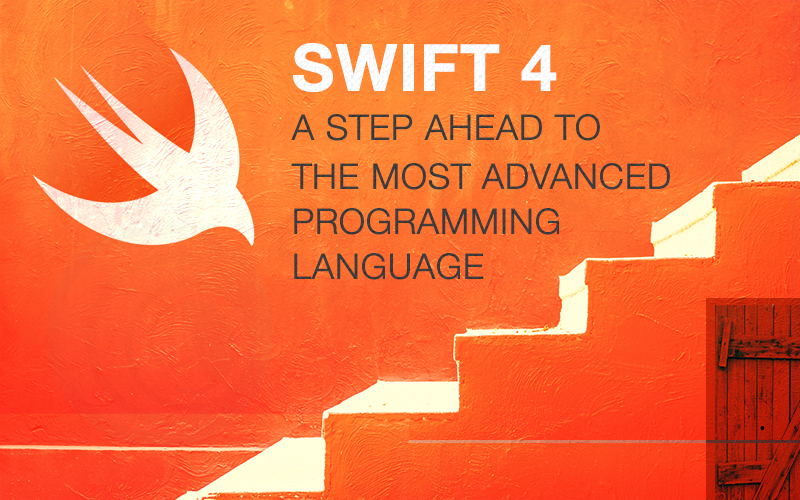Swift 4 – A Step Ahead to The Most Advanced Programming Language
Hey, welcome back!!! Let’s move one step ahead with the open source development language from Swift 3 to Swift 4. We, at 9series, have filtered out points of our next strides in developing mobile apps using Swift 4.
Swift 4 is the latest major release for iOS App Developer that is intended to be completed in the fall of 2017. Its main focus is to provide source compatibility with Swift 3 code while implementing essential feature work that needs to achieve binary stability in the language. It will contain valuable enhancements to the core language and Standard Library, particularly in the generics system and an overhaul of the String type.
Source Compatibility Modes
The Swift 4 compiler will provide two language modes: Swift version 3 and Swift version 4. Swift 3 established the language for source-level stability and now Swift 4 releases source compatibility as a feature moving ahead.
- Swift 3 mode is default for existing code and will build source code that works with the Swift 3 compiler
- Swift 4 mode allows you to use new features and performance optimizations of Swift 4, some of which may require migration
- Mixed mode allows you to take advantage of interoperability between binaries built with the same compiler. The proposed design is that a project containing various Swift modules, such as a Xcode project with multiple Swift targets, will be able to ratify into the specific Swift language mode on per module (target) level and that they can smoothly interact within the same compiled binary.
New Features in Swift 4
- Swift 4 presents another codable protocol that gives a chance to serialize and deserialize custom data types without composing any special code – and without worrying about losing your value types
- Quicker and simpler to use strings that retain Unicode correctness and add support for using, creating and managing substrings
- Smart key paths for type-safe, effective and extensible key value coding for Swift types
- Enhancements to create and manipulate Dictionary and Set types
Swift has many other features to make your code more expressive:
Multi-Line String Literals
To start a string literal, you need to write three double quotation marks: “”” then press return. After pressing return key, start writing strings with any variables, line breaks and double quotes. To end multi line string literal again write ””” in new line. Ex:-
Strings are Collections
Just like in earlier version of Swift, Strings can be handled as a collection. No need to write string.characters.something to perform string manipulation.
Dictionary Functionality has Improved
Swift 4 combines some additional functionality to dictionaries to make them more strong, and also to make them work more like you would expect. Let’s start with a simple example: Modifying dictionaries in Swift 3 does not return a new dictionary. Instead, it returns an array of tuples with key/value labels.
After that code runs you can’t read distinction[“Maths”] because it is no longer a dictionary. Instead, you need to use distinction[0].value, which is not good for us because we apply filter on dictionary and we got an array.
As of Swift 4, this acts more like you would expect: you get back a latest dictionary. Obviously this will break any existing code that relies on the array return type.
Similarly, the map() method on dictionaries got a key-value tuple passed in, and could return a single value to be added to an array.
That has not changed in Swift 4, but there is a new method called mapValues(). It allows you to modify the values and place them back into a dictionary using the original keys.
Here we try to form different buckets where each bucket will contain values having same first character in their name. For Example:-.
It’s now likely to obtain a dictionary key and provide a default value to use if the key is missing. In following statement if there is no value for key “Bio” found then it will print default value.
Built in Encoding and Decoding
Swift 4 appears with built-in encoders and decoders for JSON. JSON to Model conversion comes in built in.
One Sided Range
Swift 4 introduces Python-like one-sided collection slicing, where the missing side is automatically assumed to be the start or end of the collection.
Conclusion
Like with other Swift releases, 4.0 was announced at WWDC ’17 and released in beta form for developers alongside Xcode 9. This release of Swift added quite a few refinements and features to the programming language. First release of Swift 4.0 will bring overall stability to the source and binary interface, or ABI.
Stay tuned for other technical and development articles.
Recent Posts
Deep Learning Explained: Understanding the Brain Behind AI
The Intersection of AI and IoT: Creating Smarter, Connected Environments
The Evolution of AI: From Simple Algorithms to Neural Networks
The Role of AI in Sustainable Development
Scaling New Heights: Integrating Advanced Technologies in Startup Product Engineering








